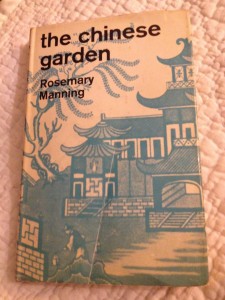Posted: February 6th, 2013 | No Comments »
Strolling second hand and antiquarian bookshops in Paris the other weekend I came across this 1939 edition of Tarzan et les Chinois – No.6 in Hachette’s Tarzan series of the late 1930. It’s not much of a tale I’m afraid but is beautifully drawn and illustrated by the American illustrator Hogarth Burne (1911-1996) who was best known for his work on the Tarzan series in the 1930s starting in 1936. There were several editions issued by Hachette in France (see second image below).


Posted: February 5th, 2013 | No Comments »
As regular readers will know last year I published Anne Witchard’s study of Lao She in London, and the modernist influences he received there, as the first book in the new Royal Asiatic Society Shanghai and Hong Kong University Press “China Monographs” series (two a year, and two more to come this year in the summer). This got me thinking that not enough people now read (especially in translation) Lao She’s excellent short stories. Without doubt Ding (1935) is Lao She’s most overtly high modernist short story directly referencing European modernism in its homage to Joyce’s Ulysses (1922). It seemed to me suitable for being converted into a short one-man monologue for an actor to take it to new audiences and also compliment Anne’s book.
And so we have the world premier of Ding, the monologue (please note that’s “monologue”, not “musical” – though Les Mis is doing OK I note!). My first theatrical outing darlings and I’m thrilled (I think you’re supposed to talk like that when you do anything linked to the theatre). As Anne is speaking on Lao She, London and Modernism at the Beijing International Literary Festival at the Beijing Bookworm that seemed a good time to launch the production – so March 9th it is. The good folk at the Bookworm (Alex Pearson and Kadi Hughes) have been wonderfully supportive, and the very talented Fabrizio Massini is directing the piece.
Tickets are now on sale for the debut performance of my adaptation of Ding, at the Bookworm on Saturday March 9th at 22:00 hours (how fringe is that!) For anyone in Beijing during the Festival I do hope you can get along – it’s a great story and hopefully my adaptation will do it at least some justice.The performance will follow on after a discussion about Lao She’s work and time in London with Anne Witchard and Alan Babbington-Smith, also at the Bookworm. Tickets for both events available only at The Bookworm. Box Office hours: 10am-9pm.
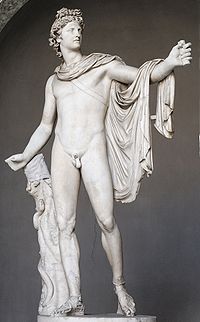
“Something’s not quite right about this version of Greece here in our New China… I’m a narrow chested Apollo!!†– Ding
Posted: February 4th, 2013 | No Comments »
Chinoiserie is getting everywhere these days though fascinatingly now increasingly less to appeal to the exotic fantasies of westerners and more to turn a buck from nouveau riche Chinese themselves. Witness 1066 Pianos who advertise regularly in magazines and newspapers to the rich and are currently touting new style Steinways, art-deco style pianos (quite nice) and the “Reborn Bluthner, in decorated Chinoiserie style with lacquer artcaseâ€

Posted: February 3rd, 2013 | No Comments »
A strong candidate for the best Chinoiserie party ever? La Bal du Grand Prix in 1923 held at the Paris Opera. The creative director was Jean Gabriel Doumergue, it was the last event of the Paris season on the eve of the Grand Prix of the Longchamps racing meeting. Doumergue opted for the theme of the Far East in the 18th century – tout Paris turned out in Chinoiserie costumes that linked Imperial China to the court of Versailles (after all Marie Antoinette was apparently fascinated by China and loved the Chinese tea the Chinese Emperor sent her). The staircase and walls were draped in black velvet to symbolise a night in the East – it then got a bit confused with Rajahs and Nautch girls mixed in with Chinese style ladies, Eunuchs and the court of Versaillies and Louis XV with the ladies carried in by black men in African costume (further confusing things somewhat). Replica Indian and Chinese treasures were paraded through the venue and the final tableau, devised by Doumergue, was of the flora and birds of the Orient followed by floral cascades of chrysanthemums, orchids, pagodas, porcelain bridges, parasols, roses and water fountains. Women gilded their eyes to appear Chinese and painted their finger nails vermillion – at 2am a band came on and everyone fox-trotted till dawn. Bet that beats the last party you went to!
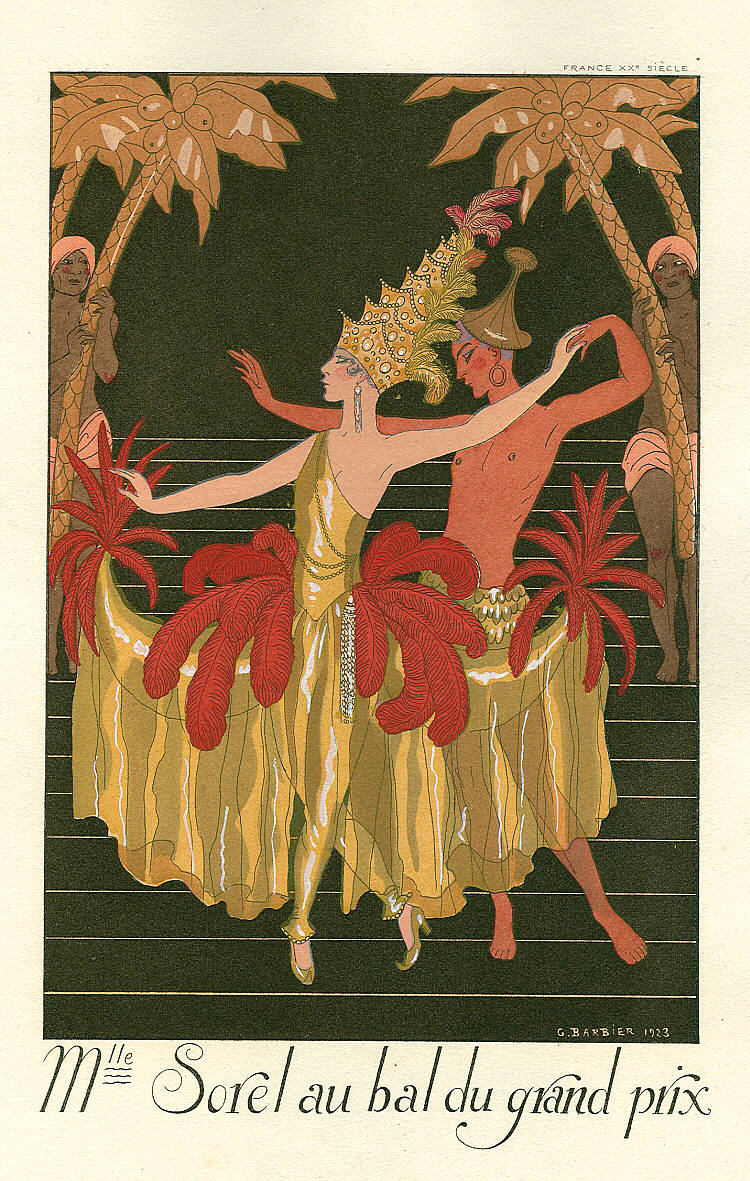
Posted: February 2nd, 2013 | No Comments »
References to Chinese restaurants and food in literature again. Regular readers will remember that this debate was originally sparked by reference in the first series of excellent TV show The Hour (set in 1950s Britain among BBC types) to the staff “going for a Chinese†– see my post on that here. Was this a phrase used in 1950s London? The jury still appears to be out on that – some respondents have said yes, some no, but we’ve not found a literary reference despite some close ones. 1930s British literature has a number of references to eating Chinese food (see my post of Eric Ambler here) and I came across another recently worthy of mentioning (at least on this blog where such things are seen as highly merited).
I happen to be reading a lot of Jean Rhys (below) at the moment and am discovering her earlier works from the 1930s, rather than the better known post-war stuff. All very pleasurable. Good Morning, Midnight (published 1939 but dealing with the earlier 1930s) is set in Paris among the city’s transient shop girls and refugee floating population on, or pretty near, the breadline. Rhys’s heroine (sort of) Sophia Jansen is an English girl adrift in Paris working boring shop jobs, meeting all manner of men and sinking into the drink. She does however like a Chinese – and is keen to have lunch at the Pékin Restaurant.
More revealing is her trip to a café specialising in Indonesian food – somewhere behind the Halles that caters to workmen who need somewhere to get a drink, eat and maybe catch some sleep. She finds the café taken over by a Dutchman and, though the décor is still English pub (it has been such an establishment previously) the menu is now Javanese. The place attracts some Parisian Chinese and we get a little idea what a menu inspired by a man from the Dutch East Indies is like and how much it cost in French Francs:
Spécialitiés Javanaises (par personne, indivisibles)
Rystafel complet (16 plats), 25.00
Rystafel petit (10 plats), 17.50
Nassi Goreng, 12.50
The menu is apparently rather amusing featuring cartoons of the struggling colonial Dutchman’s lament in the East Indies, “send more money, send more moneyâ€.
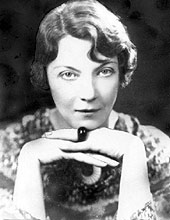
Posted: February 1st, 2013 | No Comments »
Apropos of yesterday’s Josephine Baker post Shuffle Along was an all-black show that the young Josephine Baker was involved in in America in 1921 (as part of the road company) before her life and career transformed with her move to Paris in 1925. It was put together by Eubie Blake (below) the composer and Noble Sissel, the lyricist. It was basically a mash up of musical hall type songs loosely linked together with traditional “plantation†type scenes but also one inspired by some Oriental costumes called the “Oriental Bluesâ€.
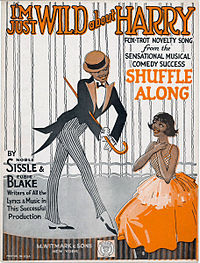
Oriental Blues has been rather forgotten particularly in the wake of the show’s stand out hit number “I’m Just Wild About Harry†which many of us can still sign the words to and seem to have absorbed by osmosis somehow (probably due to its long afterlife as Harry Truman’s campaign song).
It seems that Oriental Blues was sandwiched into the show as it happened the company has somehow come into possession of a lot of Chinese costumes and so thought they should use them somehow. there’s a video of someone playing Oriental Blues here.
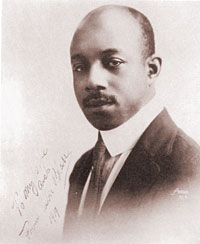
Posted: January 30th, 2013 | 1 Comment »
Regular readers of this blog will know that I often opt for posting on some quite obscure aspects of Chinoiserie. Today is such a day. With the prospect of a couple of days in Paris I thought a biography of Josephine Baker (and I’d recommend Phyllis Rose’s Jazz Cleopatra – Josephine Baker in Her Time) would make a good reading accompaniment; I’ve always been somewhat fascinated by Baker and the impact she had on France, Paris and the Folies-Bergére. Baker was to visit many places – all across Europe, North and South America, Cuba and North Africa of course entertaining Free French and Allied troops. But she never made it to the Far East – imagine Josephine Baker live in 1930s Shanghai!! But sadly it never happened.
However, there are a few Chinoiserie and Indo-Chinoiserie aspects about Baker. On her post-war American tours she did occasionally forgo her trademark short slicked down hair and kiss curl and made her hair up in a pastiche of an oriental Manchu style. But her occasional interest in things oriental had earlier roots. After making a lot of money since her arrival in Paris from St Louis in 1925 she bought a lovely house called Beau-Chêne in the Parisian suburb of Le Vésinet. She decorated the room in sumptuous style including a Chinese-themed East India room complete with temple rooms.
Baker of course became best known for her song J’ai Deux Amours (I have two loves) but before that her most famous song, first sung in a Paris revue in 1930, was La Petit Tonkinoise, the little girl from Tonkin, a song where Baker played a Vietnamese girl – it was a classic piece of Indo-Chinoiserie about a young Vietnamese girl falling in love with a French colonial planter.
The song was actually old – originally from 1905 and had been written for the music hall artiste Polin, but Baker made it her own in the 1930s. The lyrics in English below – a video of the song here.

It is I who am his little
His Anana his Anana his Anammite
I’m alive, I’m charming
Like a little singing z’oiseau
He calls me his bourgeois p’tite
His Tonkiki his Tonkiki his Tonkinese
Others make it the sweet eyes
But it’s me he loves best
The evening is due to a lot of things
Before starting to pile
I learn geography
In China and Manchuria
The boundaries, rivers
The Yellow River and Yangtze River
There’s even Love is strange
Watered by the Middle Kingdom
It is I who am his little
His Anana his Anana his Anammite
I’m alive, I’m charming
Like a little bird that sings
He calls me his bourgeois p’tite
His Tonkiki his Tonkiki his Tonkinese
Others make it the sweet eyes
But it’s me he loves best.
Posted: January 26th, 2013 | No Comments »
Browsing in the wonderful Heyward Hill bookshop the other day (where Nancy Mitford worked through the Blitz) with a friend and we came across this book from 1962, The Chinese Garden by Rosemary Manning, best known for her popular Dragon series of children’s books. It’s actually a story about an English girls school but the cover is by Germano Facetti – he is more interesting than the book – Facetti was head designer at the veritable house of Penguin where he changed the traditional look of Penguin books. As a teenager he was forced to spend time in Nazi deathcamp for being in the Italian anti-fascist resistance. Here’s his obituary.
